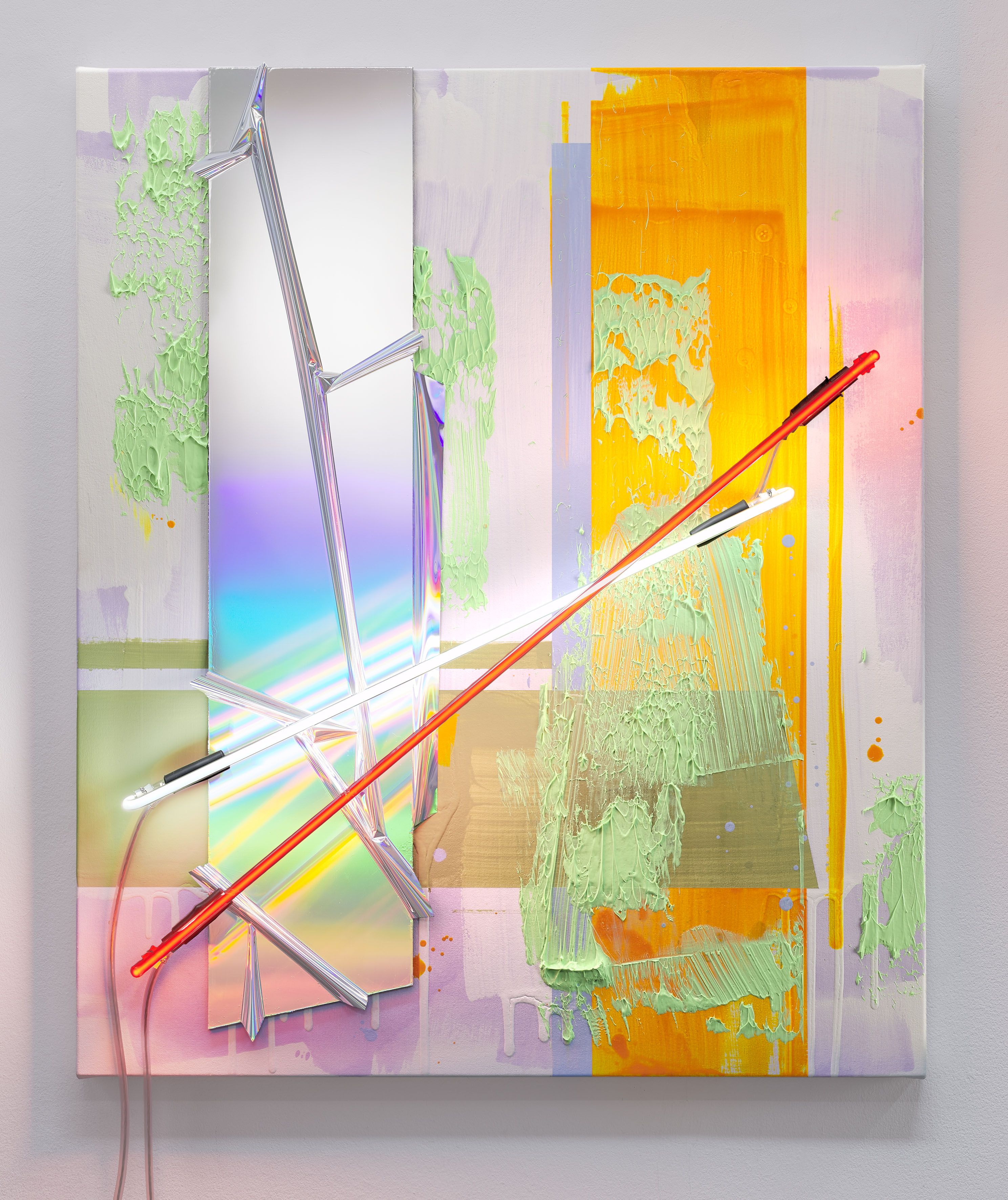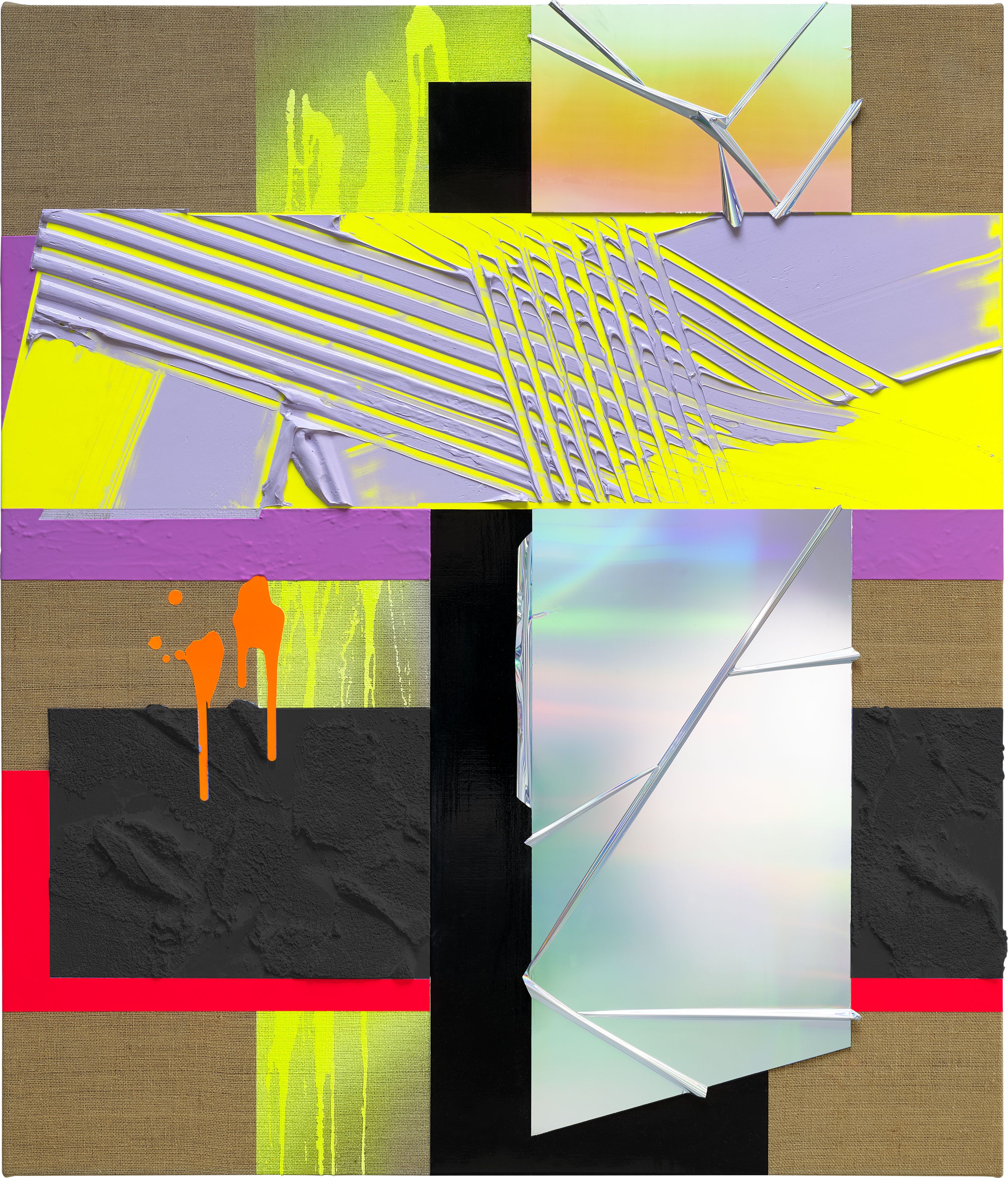Anselm Reyle
Surfacing
| Venue: | acb Gallery |
| Date: | Jan 12 – Feb 23, 2024 |
| Opening: | Jan 11, 2024, 18:00–21:00 |
Description
The first ever Hungarian solo exhibition of renowned German artist Anselm Reyle (1970) is organised by acb Gallery. The signature works of the artist, who is one of the key figures of the Berlin art scene since the end of the 1990s, are his foil and plexiglass series, which inspired generations of young artists, like the Hungarian Márton Nemes, who is going to represent Hungary at the next Venice Biennale. One of the key questions and research fields of the practice of Reyle is to explore the extremely thin borderline between kitsch and art. The folded foils of the artist are also in dialogue with the packaging fetish of our consumer society, and on the other hand the works themselves are brilliantly capturing extremely vulnerable, transient and temporary constellations.
The exhibition which takes place in acb Gallery provides a very intensive, total visual experience for the viewers as the whole space is covered by an extensive tapestry installation. Reyle was among the first trailblazing artists who unveiled the extreme self-ego-centralisation of our society, public space and media in a very early stage with his foil series. Already in the early 2000s our mirrored images crawled their way into the meta-space of the acrylic glass and foil works, which defined the turmoil of our social media culture in the past decades.
Reyle intrumentalises through the reflective folded foil tapestry all the aesthetic repertoir of his art from painting, till neon objects and installations, through ceramics. Reyle’s art in general departs from abstraction and found objects, with which he reflects ont he role of modernism in our present day society. The artist also is deeply inspired by such German contemporary classics as Polke and Richter, but his works also explore the boundaries of fashion, advertising and visual art. The artist isn’t using exclusively sensual tools, he emphasises the use of appropriation and found objects a lot as well. Sometimes he even tries to incorporate contemporary urbanistic experiences in some of his works, like his acrylic glass cubes with neons, which are inspired by the Reeperbahn red-light district of Hamburg.
In regard to his other series and works, the ceramics of Reyle didn’t get that much spotlight recently. Although the conception behind the vessels is extremely interesting, as it seems that the incredible dynamics of the pieces are tearing apart the classical ceramic structures from the inside. Furthermore Reyle seems to handle the ceramics in a painterly way as, he manages to recreate the aesthetics of some of his carved painting surfaces and to capture the intensive glowing of his colors as well in the burnt glazes. The polished mirror-like steel plynth of the ceramic vessel provides the elementary reflection experience of the Reyle oeuvre. The numerous paintings in the space of the exhibition - some combined with neon tubes -, complement the „Reyle-experience”, with the oversaturated, neon-, and plastic-like feel of the canvas-based works.

